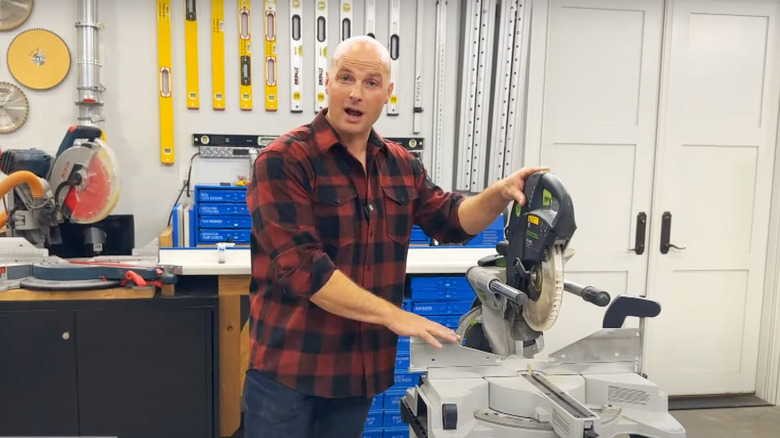Chip Wade's Expert Tips Make Repairing Cracked Window Panes A Breeze
Cracked window panes pose several problems, from simply being an eyesore to providing poor insulation and being a safety hazard. Even just a tiny crack will continue to spread throughout the glass over time. So, fixing it early will be beneficial. Lucky for us, Chip Wade, owner of Wade Works Creative LLC and master carpenter on HGTV's "Curb Appeal: The Block and "Elbow Room," knows how to quickly and efficiently repair cracked window panes.
Gather tools like painter's tape, putty, a hammer, a screwdriver, a new window pane, and glazier points to follow along with the advice he gave in a Q&A with HGTV. "Putting in new glass is easy, especially if you have single-pane windows, which are only one piece of glass thick," he said. "To start, put X's of painter's tape over the cracked pane. Tap it with a hammer to free it from the frame, then, wearing heavy gloves, pull out any remaining pieces." Next, he says to take a screwdriver to remove old putty and glazier's points. When the frame is clean, add a new layer of putty. Set the new pane in the newly applied putty and insert your new glazier's points. Then, he advises to "Roll more putty into ropes and press it around the new pane's edges, then smooth with a putty knife." Wade explains that for those with double panes, you'll need to purchase a replacement sash with a glass frame and swap them out.
Knowing when window panes need replaced
Replacing windows can be expensive, and while replacing just the panes is a great way to save money, it's essential to know when the entire window needs to be restored or just the glass. If your window is defective because of cracks or broken glass, then replacing only the pane is the best and most affordable course of action. Regarding other common issues, like condensation between the panels, the entire window could be at fault. Try opening the windows to release condensation, applying glass water repellants, adding dehumidifiers to affected rooms, and increasing the area's circulation. If these methods work to no avail, the problem likely lies with the window's seal, not the pane. "Recaulk or replace damaged weather stripping where needed," Wade told Skirting Boards. "Those seals will work to keep the cool air inside and the hot air out all summer long."
Other signs that the window as a whole is defective rather than just the window pane are if the home is receiving poor insulation, the sashes aren't operating smoothly, or rotting wood is present. Assess your windows after seasonal changes, especially harsh winters, as extreme temperatures can be damaging. "It's important to remember that everyone's windows fare differently after the winter," Wade said. "If you live in a colder climate, look for any water damage caused by melting ice or snow."

